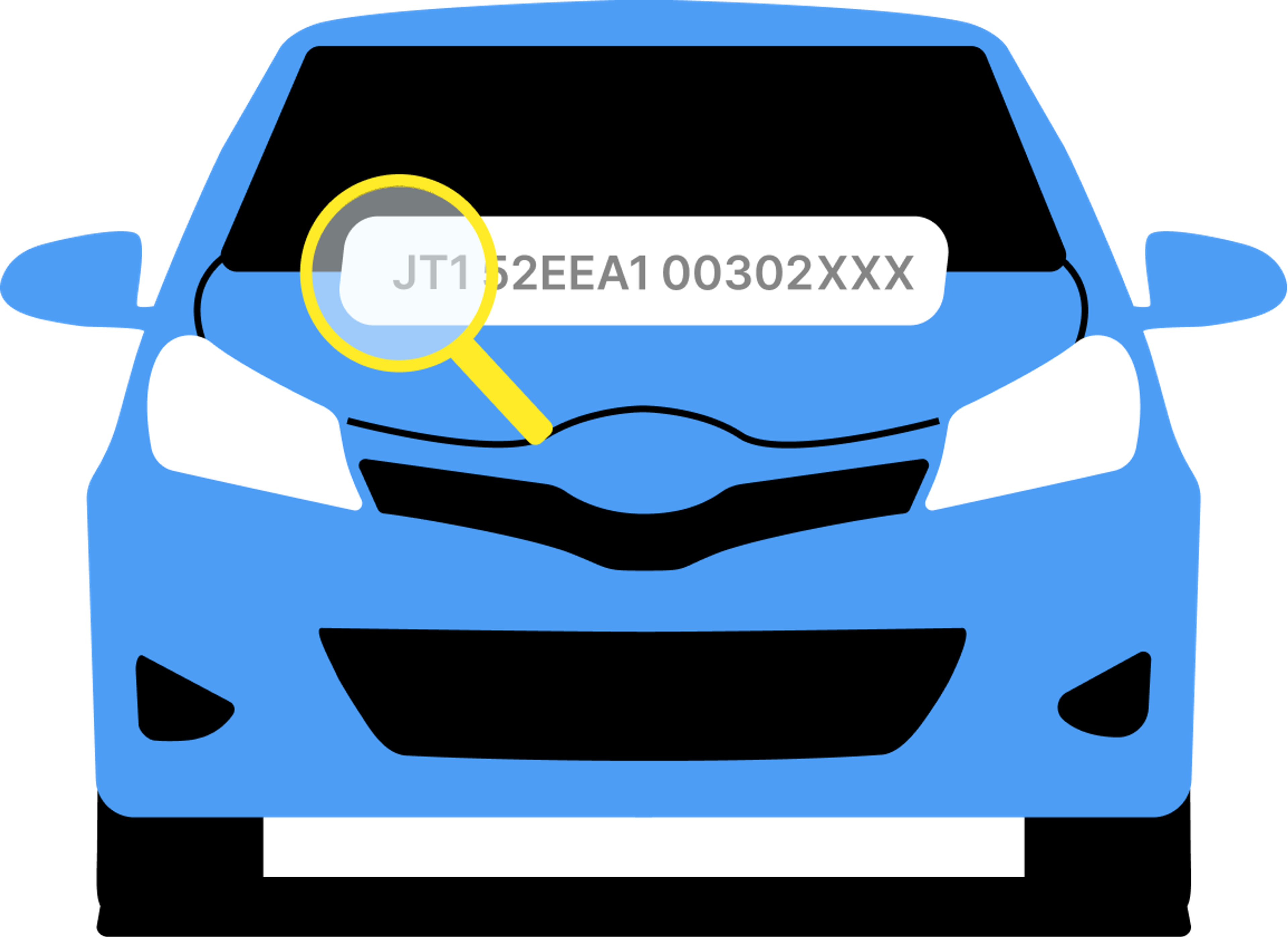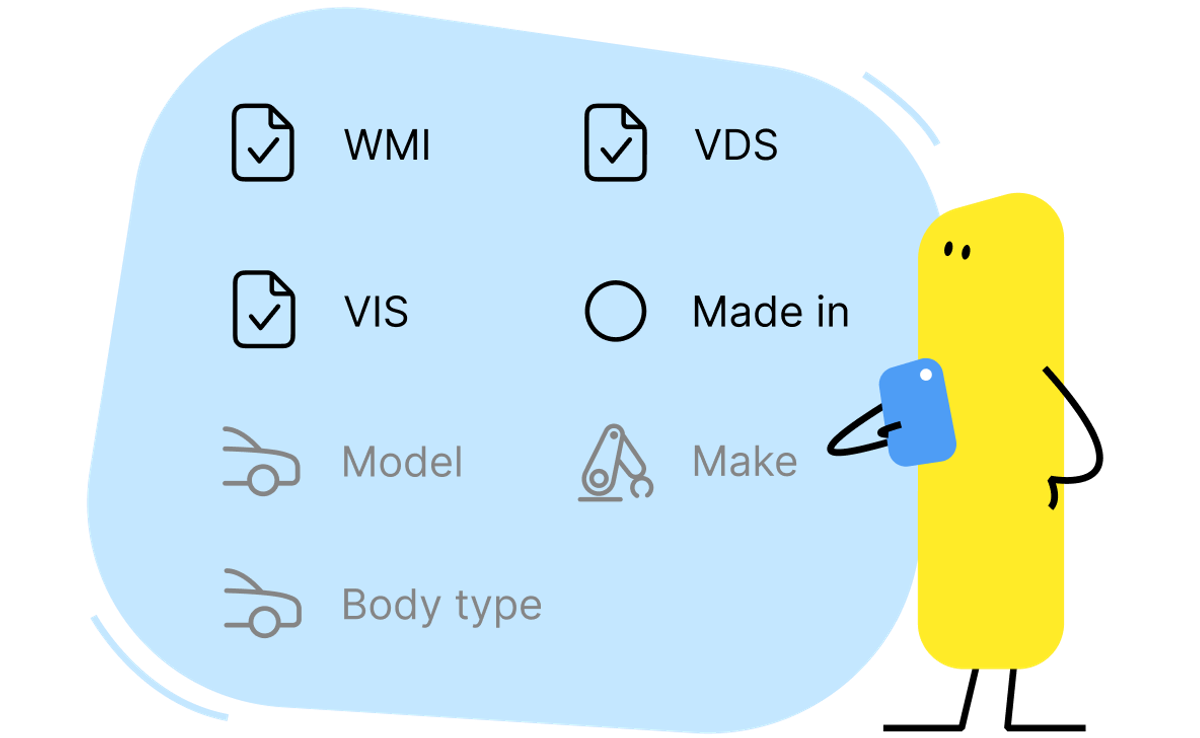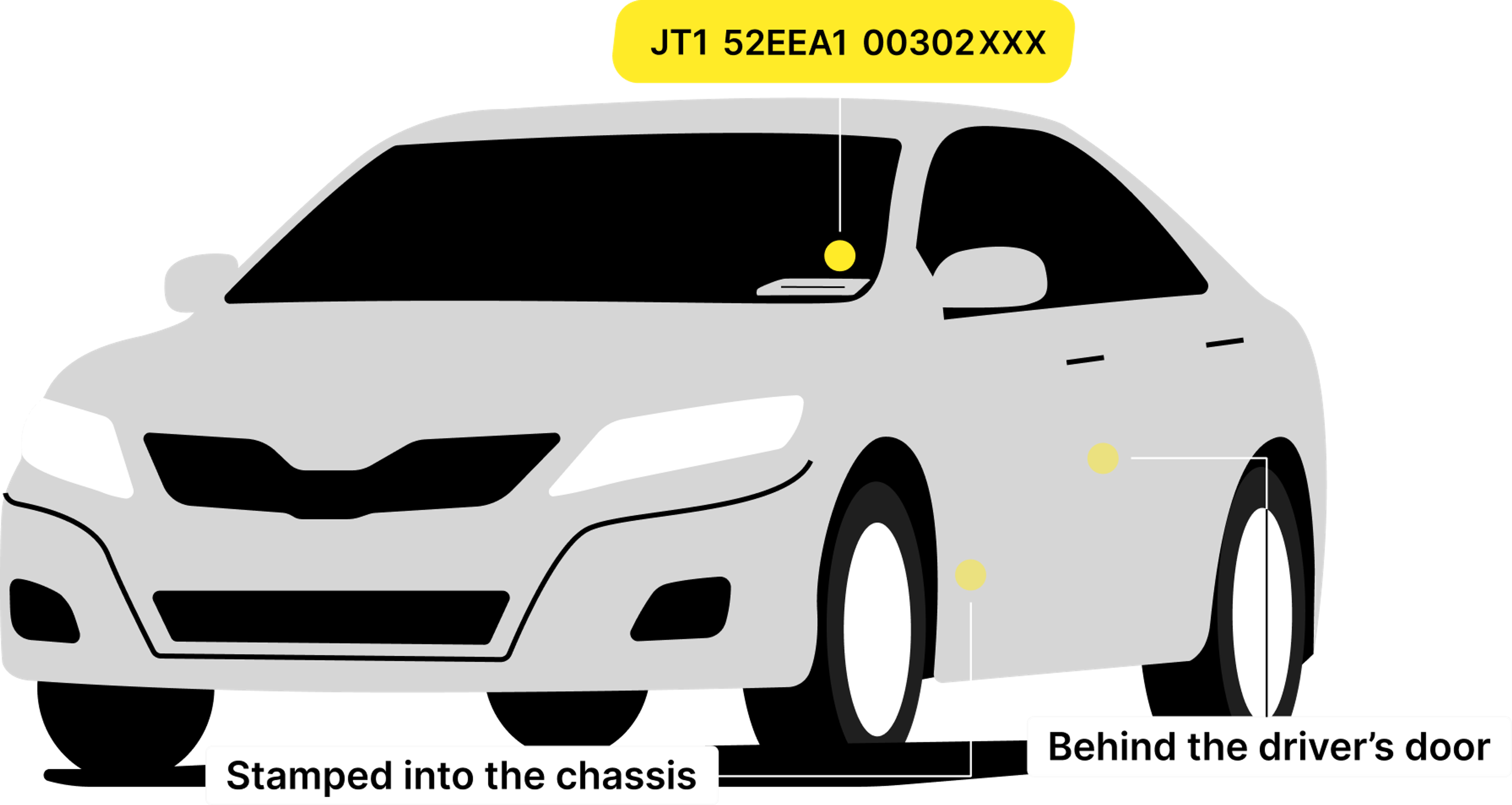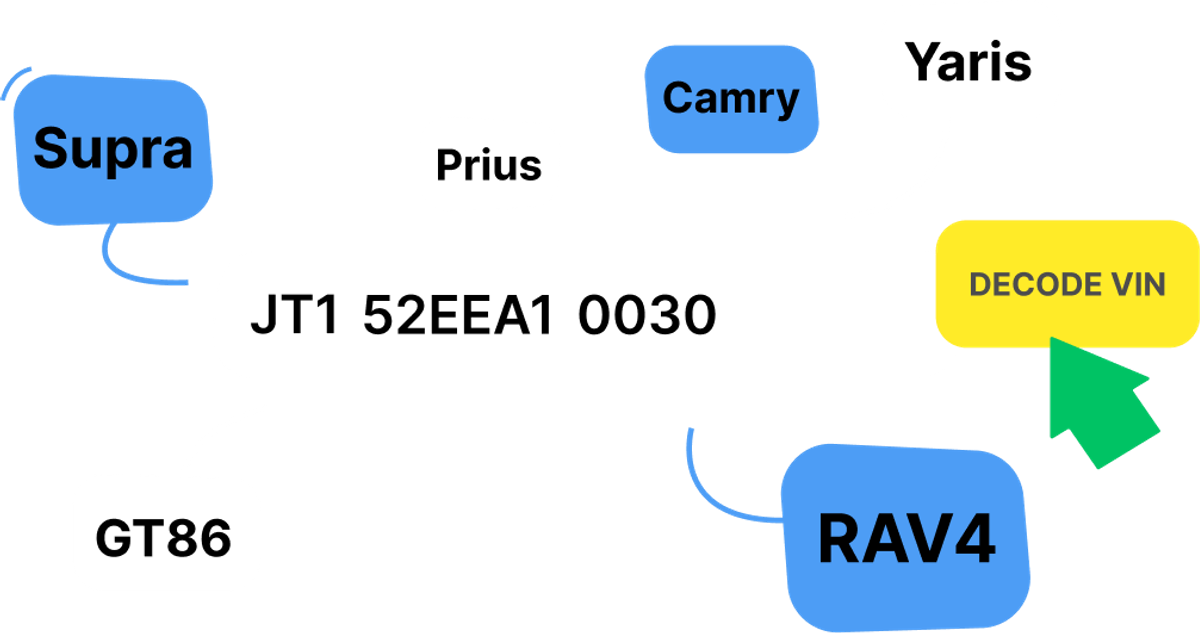Toyota VIN Decoder
Use the free digital Toyota VIN Decoder to check car specifications. Generate a vehicle history report with mileage, damages and other recorded car data.

What is a Toyota VIN number?
Every Toyota vehicle has a unique combination of numbers and letters – it’s called a vehicle identification number (VIN). It works as a unique vehicle identifier, which helps to record various data about the vehicle. The VIN is essential to keep track of maintenance, claim insurance, and much more. Owners can even use it when searching for spare Toyota parts or checking the history of a used car.All car manufacturers apply the same format when creating VIN numbers – a 17-character code consisting of coded brief data about the vehicle.

What does a Toyota VIN number contain?
Each Toyota VIN number consists of 17 characters, each of which has a coded meaning for equipment, brand, main features, model year, and other basic vehicle information. To make things simpler, it’s best to separate a Toyota car VIN number into four sections:

- World Manufacturer Identifier (WMI) – the first three characters reveal the manufacturer and country of origin.
- Vehicle Descriptor Section (VDS) – the five characters in this section describe the vehicle’s brand, engine, transmission, body style, series, etc.
- Check digit – this one digit offers mathematical proof that the VIN is legitimate.
- Vehicle Identification Section – the last piece contains eight characters, six of which form a unique serial number. Meanwhile, the other two reveal the model year and manufacturing plant.
Where to find the Toyota VIN number?
 One of the reasons the VIN numbers on cars are placed in multiple locations is to avoid scams. Used car sellers often try to sell cars welded from separate pieces. Here’s where you can find your Toyota VIN number:
One of the reasons the VIN numbers on cars are placed in multiple locations is to avoid scams. Used car sellers often try to sell cars welded from separate pieces. Here’s where you can find your Toyota VIN number:- Behind the windshield
- Behind the driver’s door
- Stamped into the chassis, under the driver’s seat
- Registration and insurance documents
All characters should align perfectly, so any sign of tampering is a risk of legal issues tied to that Toyota vehicle.
What Toyota models work with our VIN decoder?
Our Toyota VIN decoder recognizes 17-character VIN codes. While the first vehicle identification number was used in the 1950s, the current format was accepted in the 1980s, meaning that any later model is eligible for a VIN decode. You can check all current Toyota models with our VIN decoder, including:
- Compact models: Prius, Auris, Yaris, and Corolla. Saloons Avensis, Camry, Mirai, Avalon
- Crossovers, SUVs, and trucks: C-HR, bZ4X, RAV4, Highlander, Land Cruiser, Hilux, Tundra, Tacoma
- Commercial vehicles: Proace, Proace City, Proace Verso
- Sporty models: GR86, GT86, Supra, and many more

Toyota history check: what can you learn with the Toyota VIN number?
The VIN number is used to record failed and passed MOTs, register thefts, title changes, fill insurance claims, and so on. Therefore, you can get a full history report, which will reveal all that data. Here’s what you can find out with the help of the Toyota VIN number: This is far from all of the data a full vehicle history report offers. Used car sellers benefit more from people who don’t know the car’s actual condition.
This is far from all of the data a full vehicle history report offers. Used car sellers benefit more from people who don’t know the car’s actual condition.
- Activity – registration, owner changes, MOTs, etc.
- Mileage records – see how the mileage has changed during the car’s lifespan. You’ll be warned about possible mileage fraud.
- Accidents – details about past accidents, including dates, damaged parts, and repair costs.
- Historical photos – photographs from auctions, insurance companies, and other sources reveal many essential details about the car’s history.
- Maintenance records – find out when was the last time the car was serviced.
 This is far from all of the data a full vehicle history report offers. Used car sellers benefit more from people who don’t know the car’s actual condition.
This is far from all of the data a full vehicle history report offers. Used car sellers benefit more from people who don’t know the car’s actual condition.Always take the vehicle for an inspection and do a VIN lookup. Even if you’d be okay with discovered issues, negotiations will be much easier if you’re aware of them.
Frequently asked questions
Check car VIN number by make:
